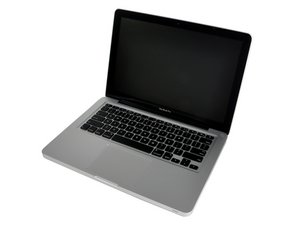You may not install this volume because the computer is missing a firm
Mojave installs just fine on an external drive, the when put into the machine it destroys the drive to the point of being unable to even format it or even see it.
When trying to install internally I get the popup,
“You may not install this volume because the computer is missing a firmware partition.”
If I install a partition with Disk Utilities I get the same thing.
If I run into someone who helped write High Sierra or Mojave and included these obstacles to make older Macs obsolete, is it Justifiable Homicide if I strangle them with my bare hands? Or should,I just carve an Apple logo into their foreheads?
I have five machines MBP 2011-12 on my bench right now that were upgraded with Seagate SSHD drives. All are now non-functioning because of High Sierra updates and I can’t fix them. I’ve already replaced about a dozen drives out of my pocket because of this. I sent emails out to all my customers with SSHD drives not to upgrade a couple of months ago.
UPDATE
OK I tried just a standard Apple 500 GB drive. Formatted it externally. Put the drive in the MBP 13” 2012 non-retina machine and get the same “You may not install this volume because the computer is missing a firmware partition.” So Pulled it wiped it again and put it in the machine. Did an internet recovery and install the original Mavericks. Dropped on downloads od El Capitan, Sierra, High Sierra, and Mojave. Will install them all in order until I get a failure and report back. @ajcooke01 @danj
Still think Tim Cook would look good to me with that Apple carved into him.
UPDATE
El Capitan installed, no problems but noted no firmware updates. Going for Sierra now.
Sierra OK, doing the updates now.
UPDATE 10/5/18
Took the standard Apple branded Seagate MX 500GB all the way to Mojave and it’s running OK.
Now I tried a clean install of Mojave on a Seagate 500 GB SSHD older model. and all went slick. Did Migration. Now when I try to start, it takes forever for the loading progress bar to complete, especially the last quarter of an inch and NO JOY. Cannot get it to fully boot. Will be trying various cures today. This is really depressing as I have installed a couple of hundred Seagate SSHDs both the FireCudas and the older models. When trying to boot in Safe Mode, I get the Apple logo flash on, then a circle with a line through it, then it starts to load, get 1/3 of the way and the machine shuts down.
UPDATE 10/6/18
I put the stand drive back in internally and it booted just fine.
Hooked up the SSHD externally and repair attempts failed. It did show up titled as APFS Media. So the software install has put that APSF on again. After four attempts I was able to reformat it OS X Mac Extended. @danj, not sure what to try now except to take it down to Sierra. Any suggestions?
Esta é uma boa pergunta?


 3,4 mil
3,4 mil  1,1 mil
1,1 mil  2,6 mil
2,6 mil 


3 comentários
@mayer settle down there good sir, just replace their toothpaste with thermal paste. ;-)
Have you tried the APFS formatting scheme? Have you tried installing the Mojave installer app onto an internal SSD/HDD with High Sierra on it and then installing it via the installer app?
Also, are you sure that this HDD/SSD works 100%?
por [deleted]
Simply download Carbon Copy Cloner. First 30 days its free. Use CCC to create a firmware partition on the target OS disk. Then install Mojave!!! Easy. See how it pays to know the right people. Regards, Barron Hall. Chief Wealth Creation Mentor for DollarBillioniare.com.
por Frank Rosenberg
When the firmware partition is messed with (ifi) its an attack to make it appear as if your components ( mother board, video card, wifi, bt are breaking down, obsolete etc, dont fall for it, test the parts your self, its all software and a scam to extort users i to buying a new mac/device or simply to bringing their computers to apple scam store and trust them with their data….you can re install the firmware by restarting in recovery mode.., then clone back or upgrade all the way to Catalina but dont go as far as the last version, the security updates are basically programs to remove support for 3rd party devices, accessories and other functions of your device and or computer,nothing else,
por Fat Lip